False Positive
Image regénérée par intelligence artificielle,
impression numérique 128 × 80 cm
Collection de l’artiste
Cette œuvre s’appuie sur un photogramme du film réalisé par Abraham Zapruder, document amateur qui a capturé l’assassinat du président John F. Kennedy à Dallas le 22 novembre 1963. L’artiste a soumis cette image historique à un processus de réinterprétation par intelligence artificielle.
Le système d’IA, analysant l’image source, a généré une nouvelle version en transformant radicalement son contenu et sa signification. Cette métamorphose algorithmique peut être comprise comme une forme de paréidolie artificielle – phénomène qui désigne la tendance à percevoir des formes familières dans des motifs aléatoires.
L’œuvre établit un parallèle entre les nombreuses interprétations subjectives du film de Zapruder qui ont alimenté diverses théories sur l’assassinat, et le processus de génération d’image par l’intelligence artificielle qui produit sa propre “lecture” du document historique.
Ce travail questionne la nature du document visuel et sa malléabilité à l’ère numérique. Il interroge les notions de vérité historique et d’objectivité documentaire face aux technologies contemporaines qui brouillent la frontière entre authentique et généré, entre témoignage et fiction.
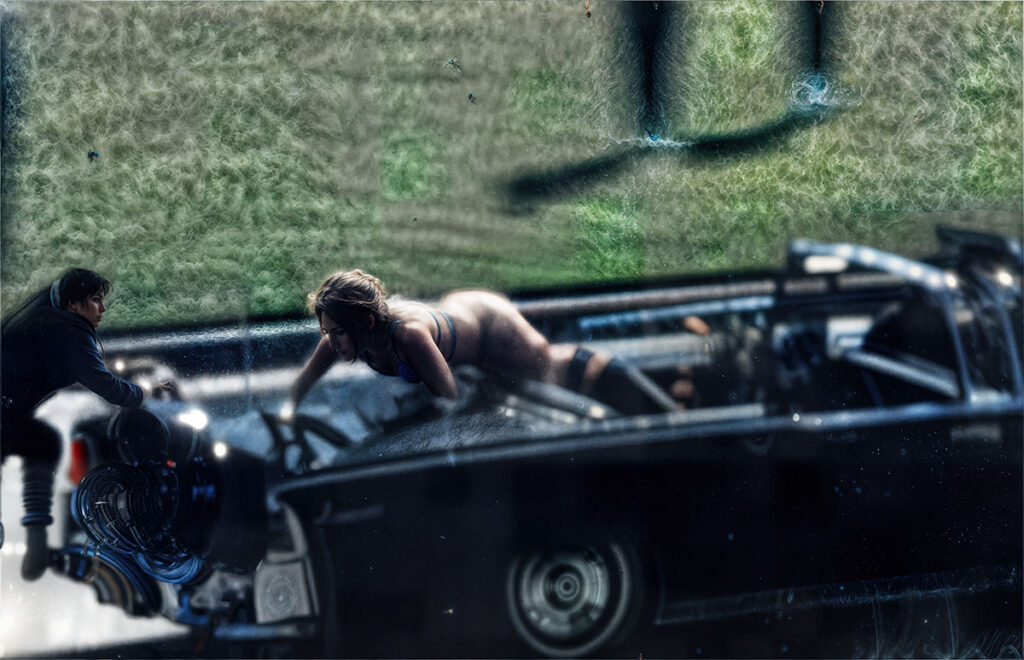
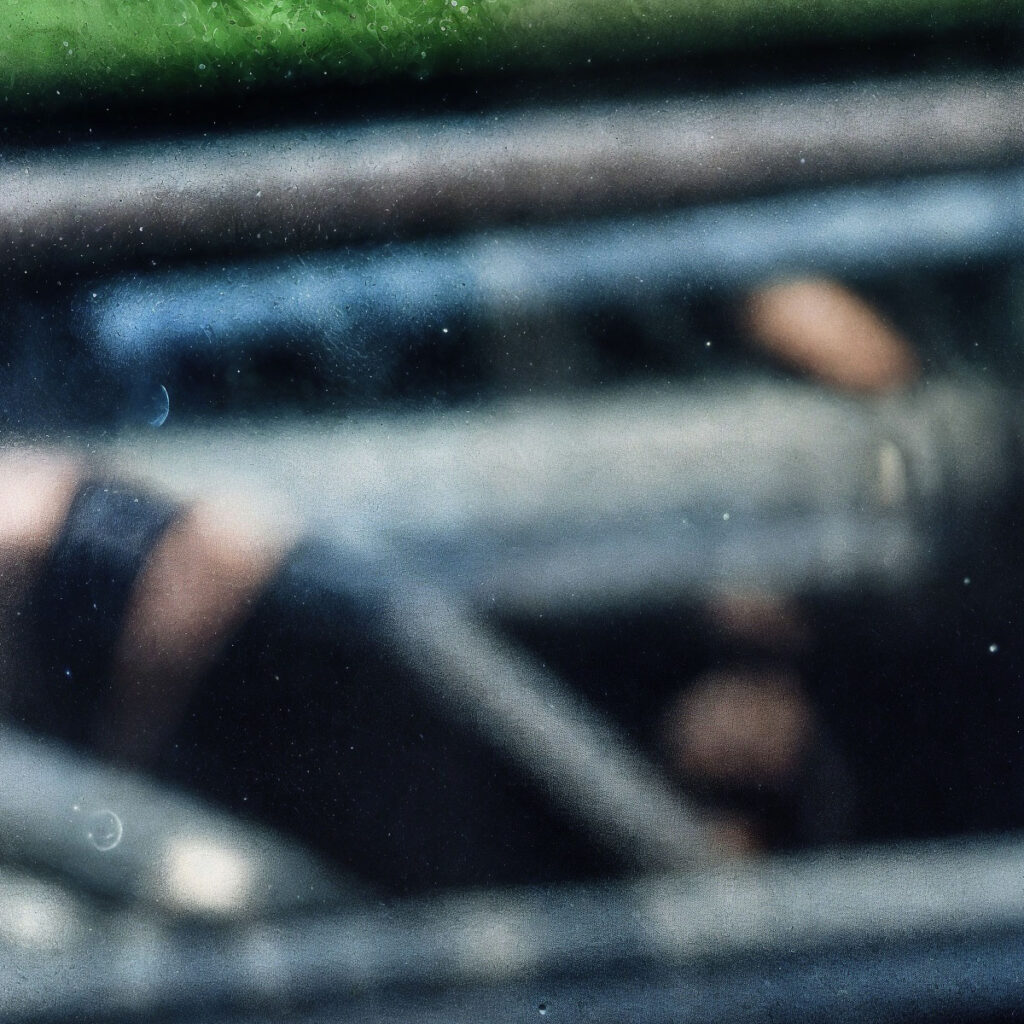
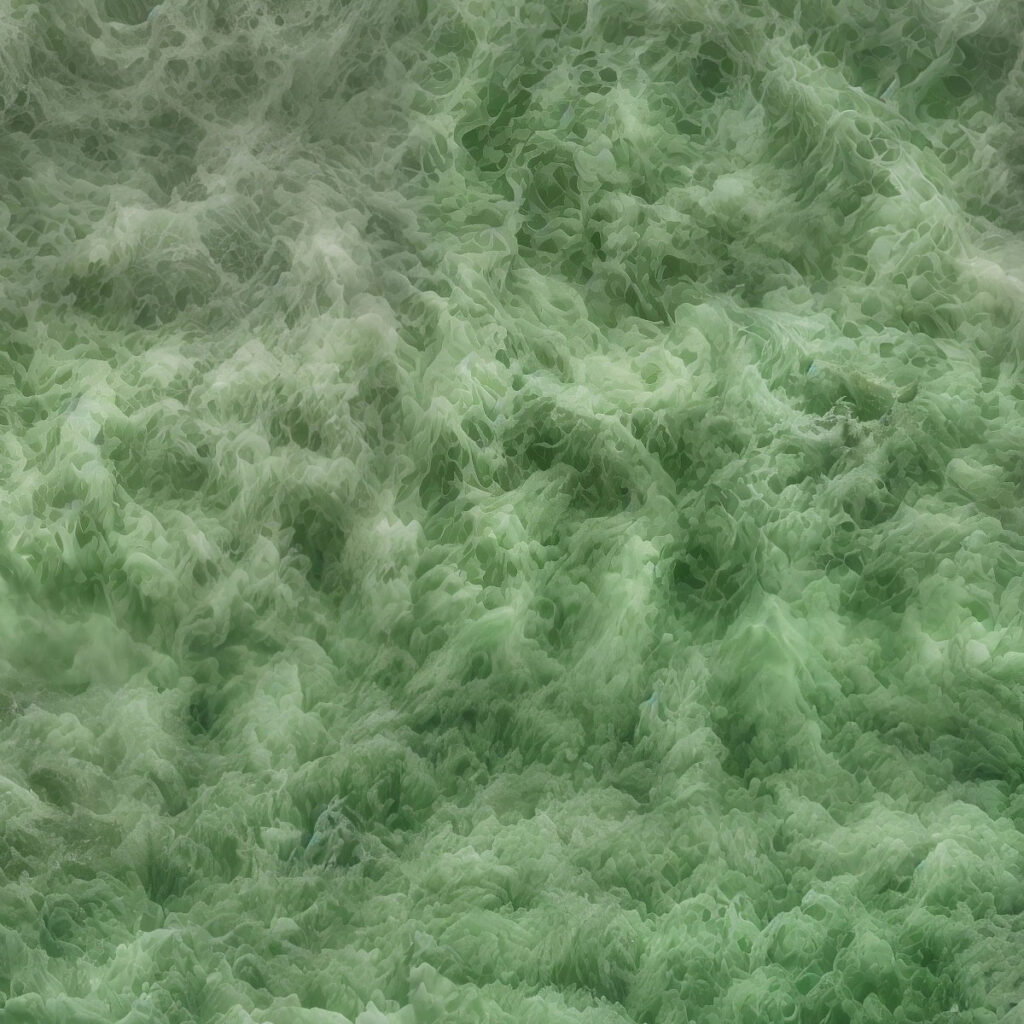
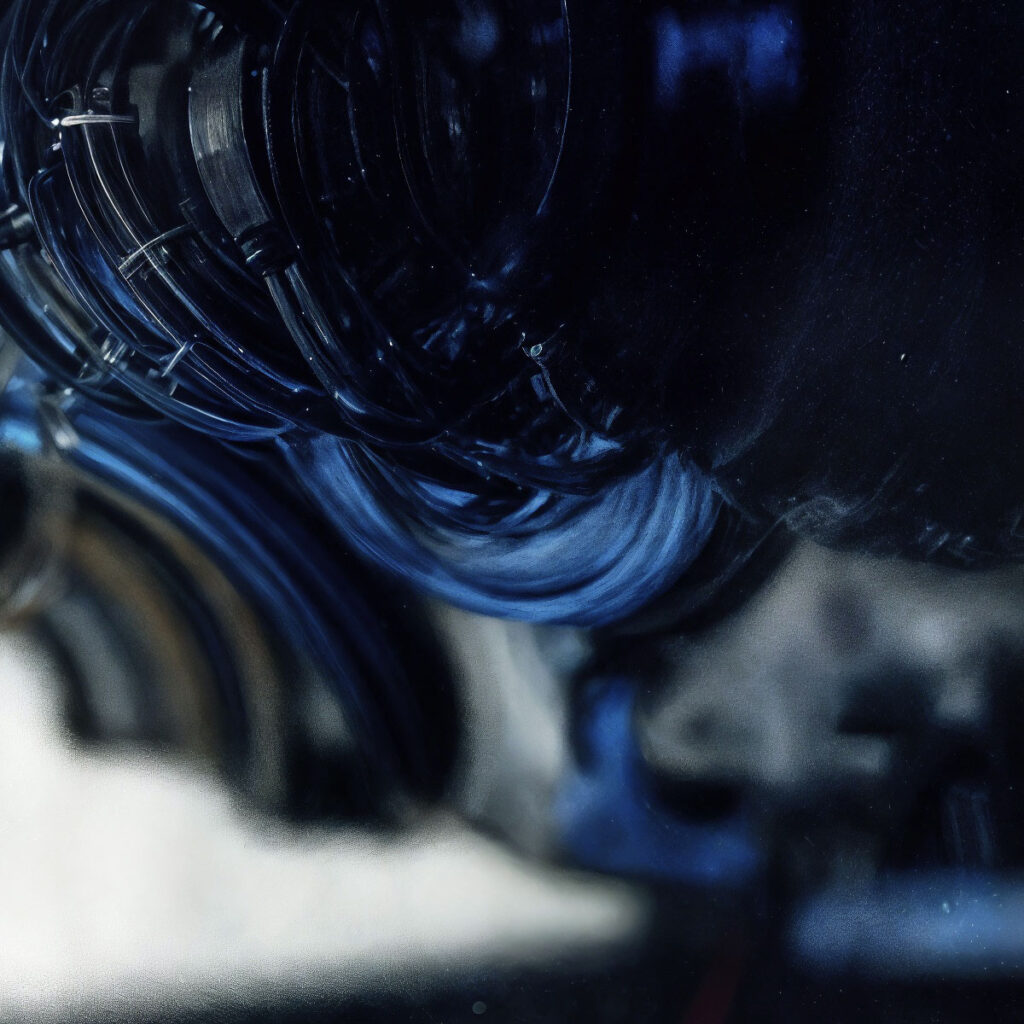
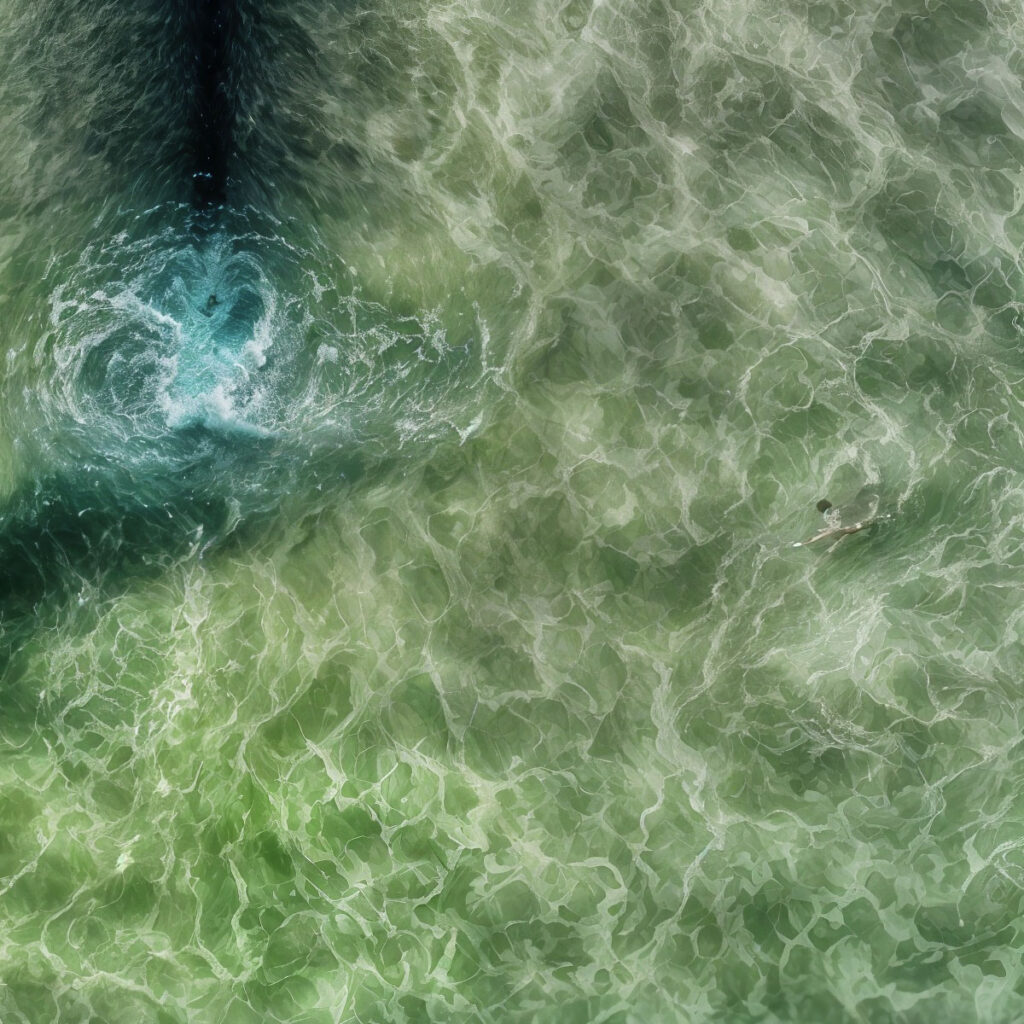

Cette œuvre se base sur une image provenant du film réalisé par Abraham Zapruder, document historique capturant l’assassinat du président John F. Kennedy à Dallas en 1963. Le projet artistique consiste en une transformation de cette image source par l’intelligence artificielle, qui génère une nouvelle version en y ajoutant des éléments visuels supplémentaires.
Le film de Zapruder constitue un document particulier dans l’histoire de la photographie et du cinéma amateur. Ces images en 8mm, captées le 22 novembre 1963, sont devenues une source majeure d’analyses, d’interprétations et de théories concernant l’assassinat du président Kennedy. La séquence originale, composée de 486 photogrammes, a fait l’objet de nombreuses études techniques et a alimenté diverses interprétations des événements.
Cette œuvre s’intéresse spécifiquement au phénomène de la paréidolie, qui se définit comme la tendance psychologique à identifier des formes familières dans des motifs aléatoires. Dans le contexte du film de Zapruder, ce phénomène s’est manifesté de manière significative : de nombreux observateurs ont perçu dans ces images des éléments qui correspondaient à leurs théories ou convictions personnelles concernant les circonstances de l’assassinat.
L’artiste utilise ici l’intelligence artificielle comme un outil pour prolonger et questionner ce processus d’interprétation visuelle. Le système d’IA, programmé pour analyser et augmenter l’image source, produit sa propre interprétation en ajoutant des détails qui n’existaient pas dans l’image originale. Ce processus peut être considéré comme une forme de paréidolie artificielle, où la machine, plutôt que l’humain, devient l’agent qui “perçoit” et matérialise des éléments supplémentaires.
Cette démarche soulève plusieurs questions sur la nature de l’interprétation visuelle et la relation entre perception humaine et traitement automatisé des images. L’œuvre met en parallèle deux types de construction du sens : d’une part, les multiples interprétations humaines qui ont émergé autour du film de Zapruder, et d’autre part, le processus de génération d’image par l’intelligence artificielle.
Le choix du film de Zapruder comme matériau de base n’est pas anodin, car ce document a généré un nombre considérable d’analyses et de théories, devenant un exemple significatif de la manière dont un même document visuel peut donner lieu à des interprétations divergentes. L’intervention de l’intelligence artificielle dans ce contexte propose une nouvelle lecture de ces images historiques, ajoutant une couche supplémentaire à leur histoire interprétative.
Cette œuvre s’inscrit dans le contexte plus large des pratiques artistiques contemporaines utilisant l’intelligence artificielle comme médium. Elle participe aux réflexions actuelles sur le rôle des technologies d’IA dans la production et l’interprétation des images, ainsi que sur les questions de vérité historique et de construction narrative à partir de documents visuels.
Le projet interroge également la notion de document historique et sa transformation par les technologies contemporaines. En utilisant l’IA pour modifier une image historiquement significative, l’œuvre questionne les frontières entre document et interprétation, entre fait historique et construction narrative.
The work is based on an image from the film directed by Abraham Zapruder, a historical document capturing the assassination of President John F. Kennedy in Dallas in 1963. The artistic project consists of a transformation of this source image by artificial intelligence, which generates a new version by adding additional visual elements.
Zapruder’s film is a special document in the history of photography and amateur cinema. These 8mm images, captured on November 22, 1963, have become a major source of analysis, interpretation and theory concerning the assassination of President Kennedy. The original sequence, made up of 486 photograms, has been the subject of numerous technical studies and has fueled a variety of interpretations of the events.
This work focuses specifically on the phenomenon of pareidolia, which is defined as the psychological tendency to identify familiar forms in random patterns. In the context of Zapruder’s film, this phenomenon manifested itself in a significant way: many observers perceived elements in these images that matched their personal theories or convictions regarding the circumstances of the assassination.
Here, the artist uses artificial intelligence as a tool to extend and question this process of visual interpretation. The AI system, programmed to analyze and augment the source image, produces its own interpretation by adding details that did not exist in the original image. This process can be seen as a form of artificial pareidolia, where the machine, rather than the human, becomes the agent that “perceives” and materializes additional elements.
This approach raises a number of questions about the nature of visual interpretation and the relationship between human perception and automated image processing. The work parallels two types of meaning construction: on the one hand, the multiple human interpretations that have emerged around Zapruder’s film, and on the other, the process of image generation by artificial intelligence.
The choice of Zapruder’s film as source material is not insignificant, as this document has generated a considerable number of analyses and theories, becoming a significant example of how the same visual document can give rise to divergent interpretations. The intervention of artificial intelligence in this context proposes a new reading of these historical images, adding another layer to their interpretative history.
This work fits into the broader context of contemporary artistic practices using artificial intelligence as a medium. It participates in current reflections on the role of AI technologies in the production and interpretation of images, as well as on questions of historical truth and narrative construction from visual documents.
The project also questions the notion of the historical document and its transformation by contemporary technologies. By using AI to modify a historically significant image, the work questions the boundaries between document and interpretation, between historical fact and narrative construction.
